Three times for me, A few thousand times for the cranes
We have been lugging a tiny home across the country for several years. In some of the years, gas is reasonable, but it is way too expensive in other years. Usually, I don’t think about how much is spent on fuel. This was the first long drive in quite a while; the first fillup at a Love’s truck stop was a reawakening. The card reader on the pump was frozen, forcing me to enter the convenience store to pre-pay. The counter person, oblivious to the inconvenience, asked how much I needed. I surprised myself when I said $100, knowing this would not be the only time I filled up the truck that day, with the rig only getting 6.5 MPG while driving into a twenty-five-mile-per-hour headwind. This would be an expensive day, but we did not get into RV’ing to save money.
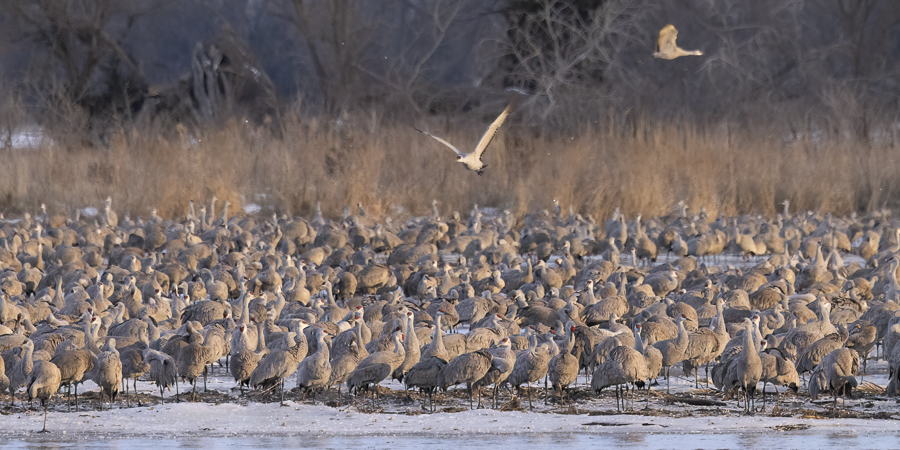
On our first day in the photographer’s blind, the sun poked through the cloud cover for about 45 beautiful seconds. The cameras sounded like paparazzi on a red carpet. Take notice of the ice on the Platte River.
The Princess and I are visiting Kearny, NB, to see the Sandhill Crane migration one more time. The birds spend a few weeks here every March and again on the return trip south. We were here last year and enjoyed ourselves so much that the trip made it on the list of places to visit in 2024. The drive through Nebraska was interrupted this year by a significant winter storm making its way over the prairie. Weather reports forecasted high winds with gusts up to 50 MPH. We had planned on driving to Kearny, but with a flexible schedule, we could stop overnight in Nebraska City to let the worst weather pass. The next day was a little better; driving I-80, we saw numerous trucks blown over or jack-knifed on the side of the highway. We were relieved to arrive safely at the Fort Kearny Recreation Area a day later than planned. This state campground is about five miles from the Ina Rowe Bird Sanctuary.
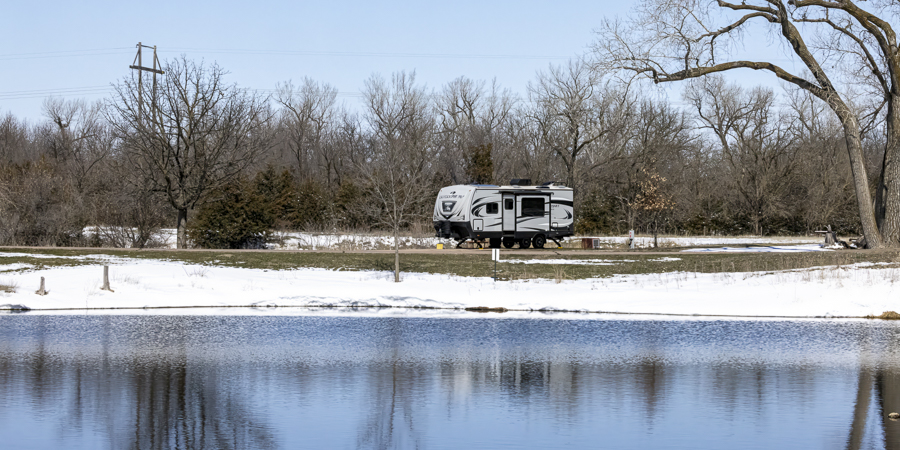
Our campsite at Fort Kearney Recreation Area
The Audubon Society provides a series of viewing blinds along the Platte River. One of the blinds is set aside for photographers. People from all over the country want a spot during the three weeks in March when the Sandhill Cranes pause their migration north to rest on the Platte River. The reservations are booked fast, with space for only twelve people each morning.
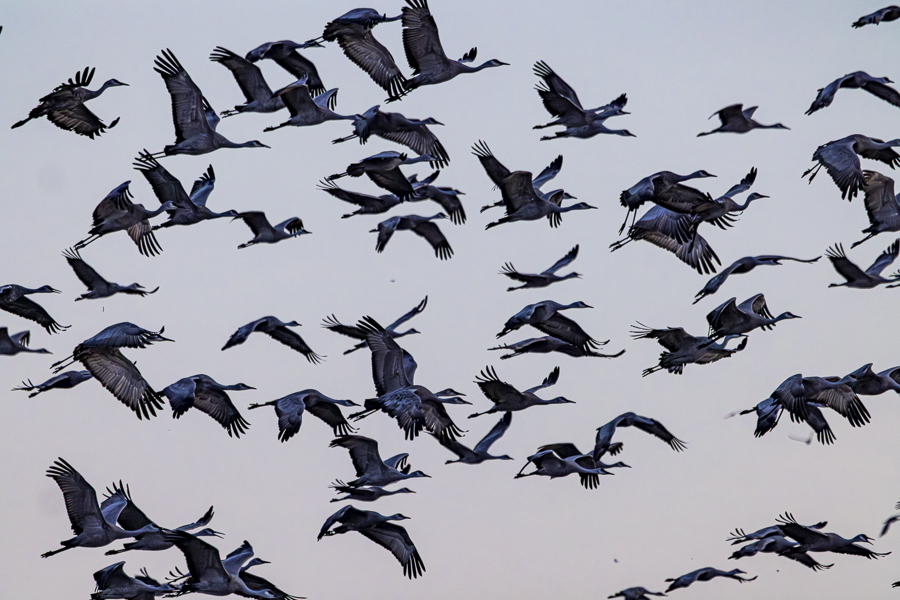
Gray birds silhouetted on a gray sky.
We were lucky to get spots for two days. Wildlife photography is a gamble at best. First, patience is required, and I don’t have much of that. Next, a good photo begins with good light, and then I am told the subject needs to look into the camera and smile. Day one was a bust except for a very brief period. The sky was heavily overcast, a very flat, neutral gray. There is no texture at all. To top the morning off, it was 13 degrees as we walked the half mile to get to the blind an hour before sunrise. Conditions did not improve. Thousands of gray birds stood in gray water that blended into the gray background. It was so cold the cranes did not want to leave the sandbars. On the positive side, they sounded beautiful. Just seeing and hearing the birds is more than worth the price of admission.
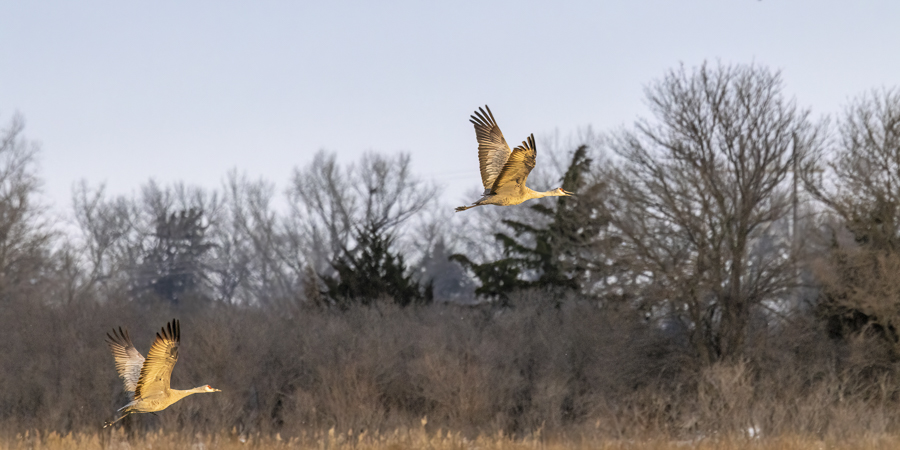
Another shot during that magic 45 seconds.
As bad as it was on the first morning, day two was perfect. There was a blue sky with a few puffy white clouds, and temperatures were rising in the mid-thirties. The cranes were animated. Just as the sun peaked over the horizon, painting the high clouds a pale pink, a few hundred birds rose off the sandbar directly in front of the blind, offering a preview of what was to come. That first flight left thousands waiting for the sun to get slightly higher.
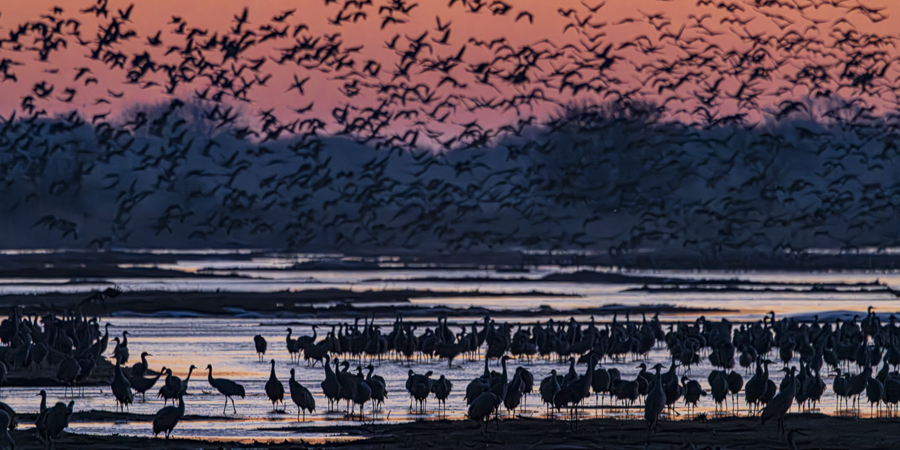
Sunrise, day 2
The light improved, the temperature rose, and the cranes became more active. The males would challenge each other, determining some level of temporary dominance. All the while, thousands of voices were squawking, building excitement until, for some unknown reason, they rose in unison to leave the river to feed in the surrounding grain fields.
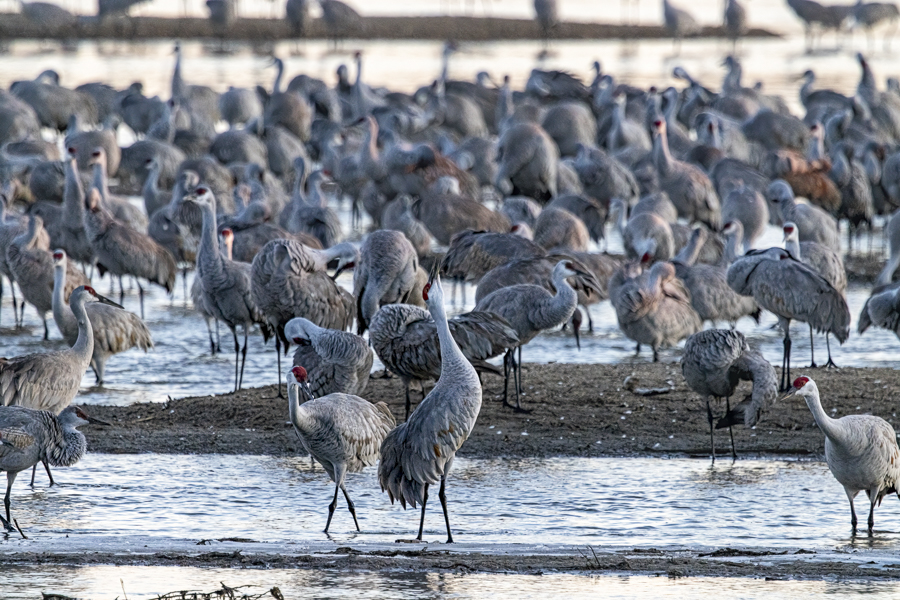

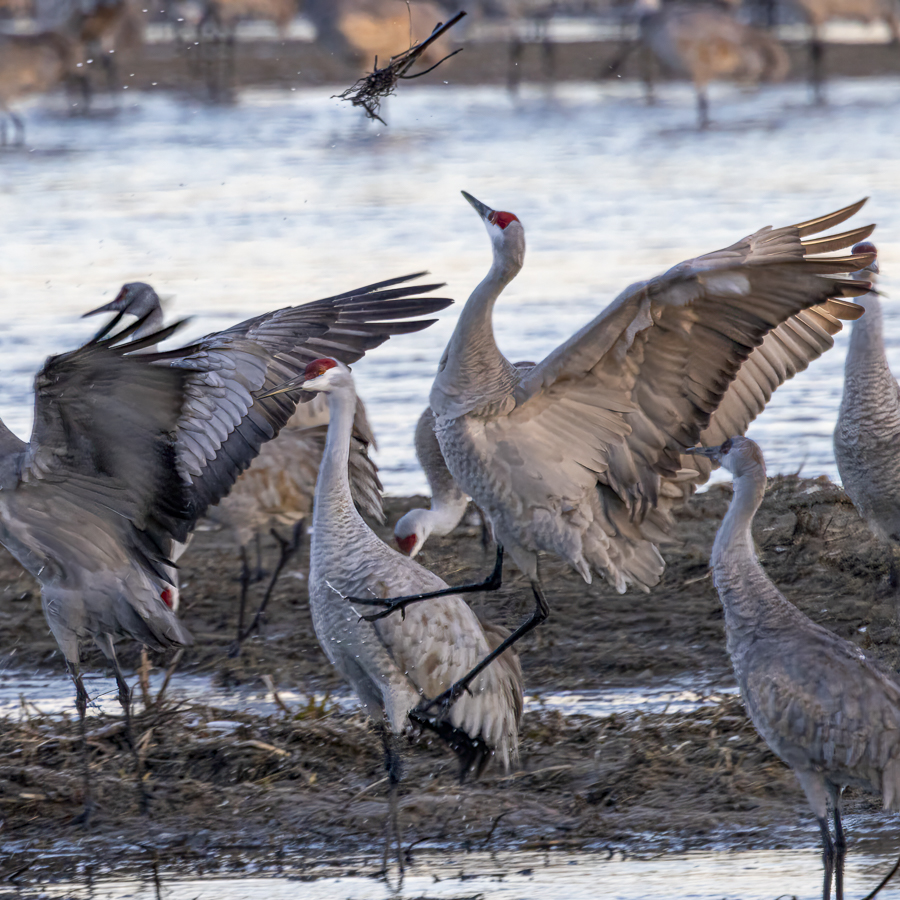

When the temperature started to rise, the cranes became more active.
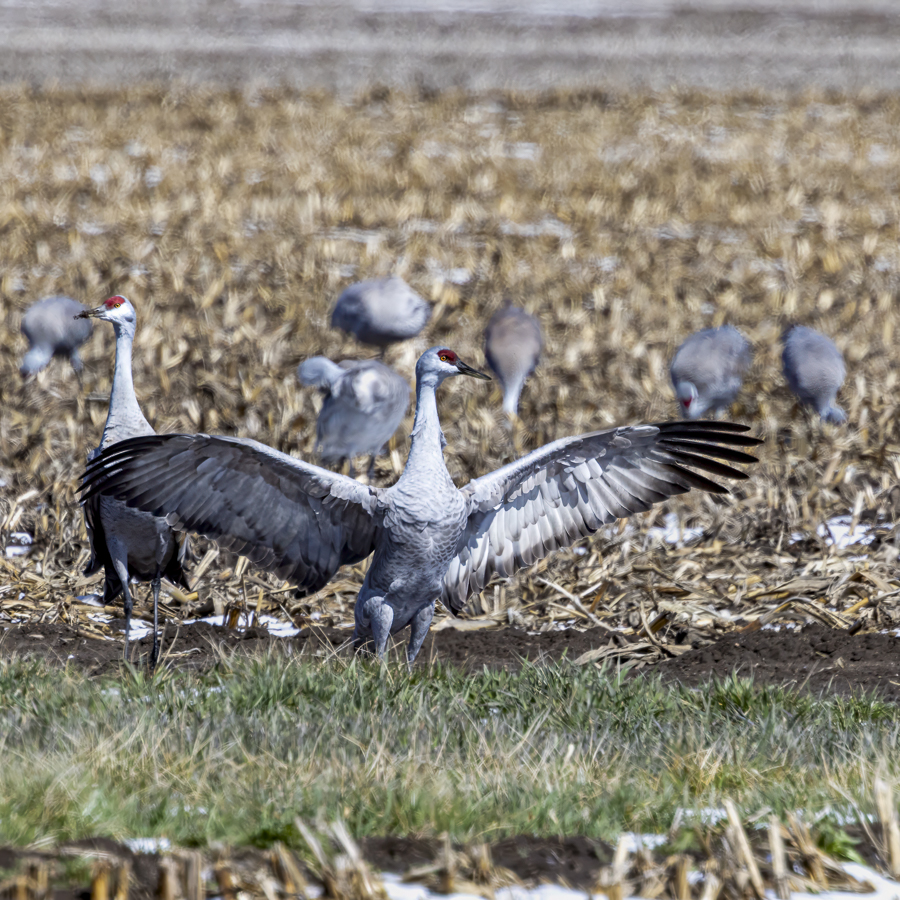
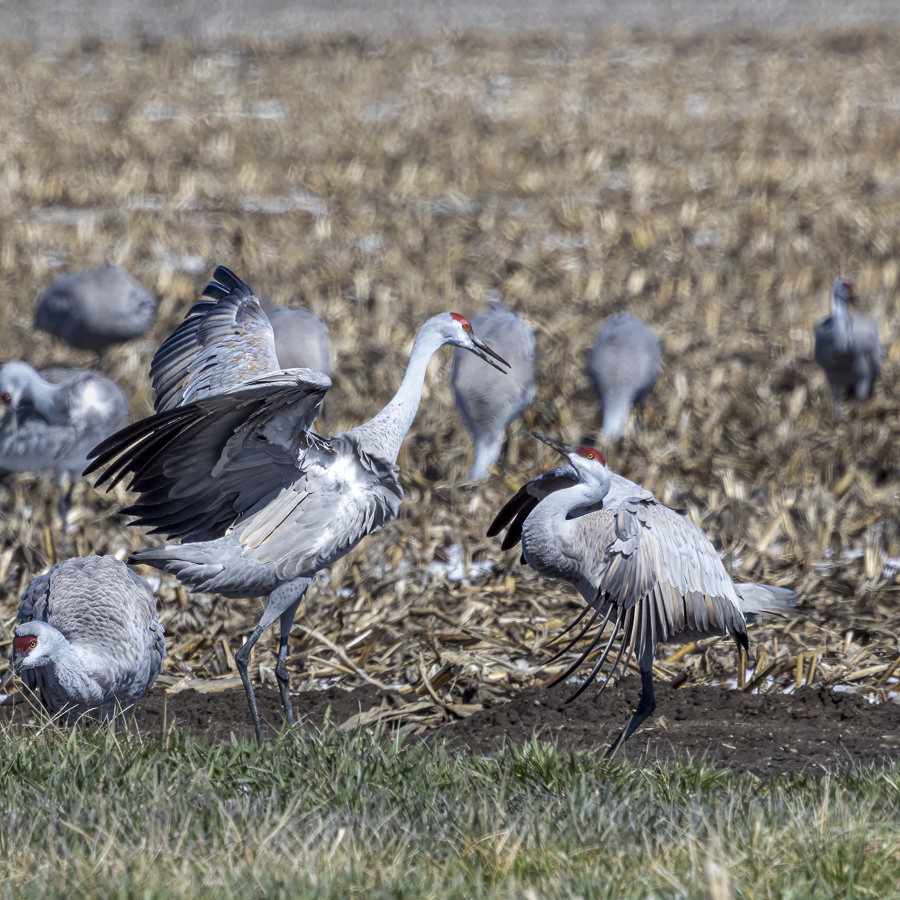
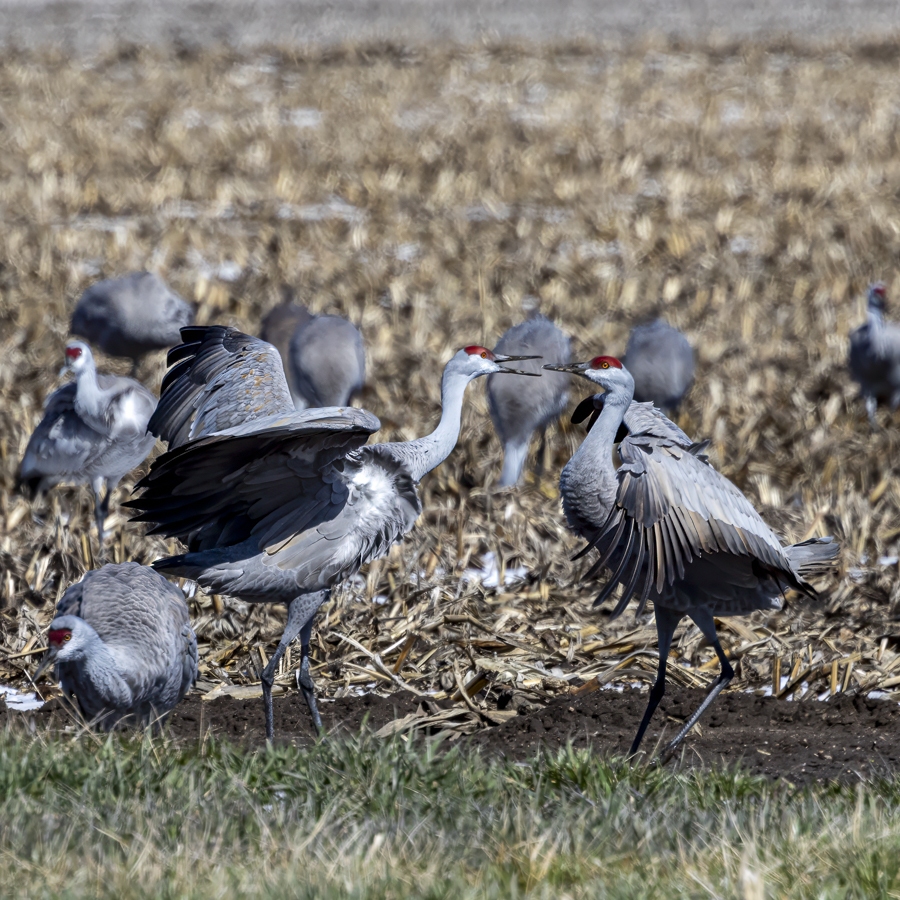
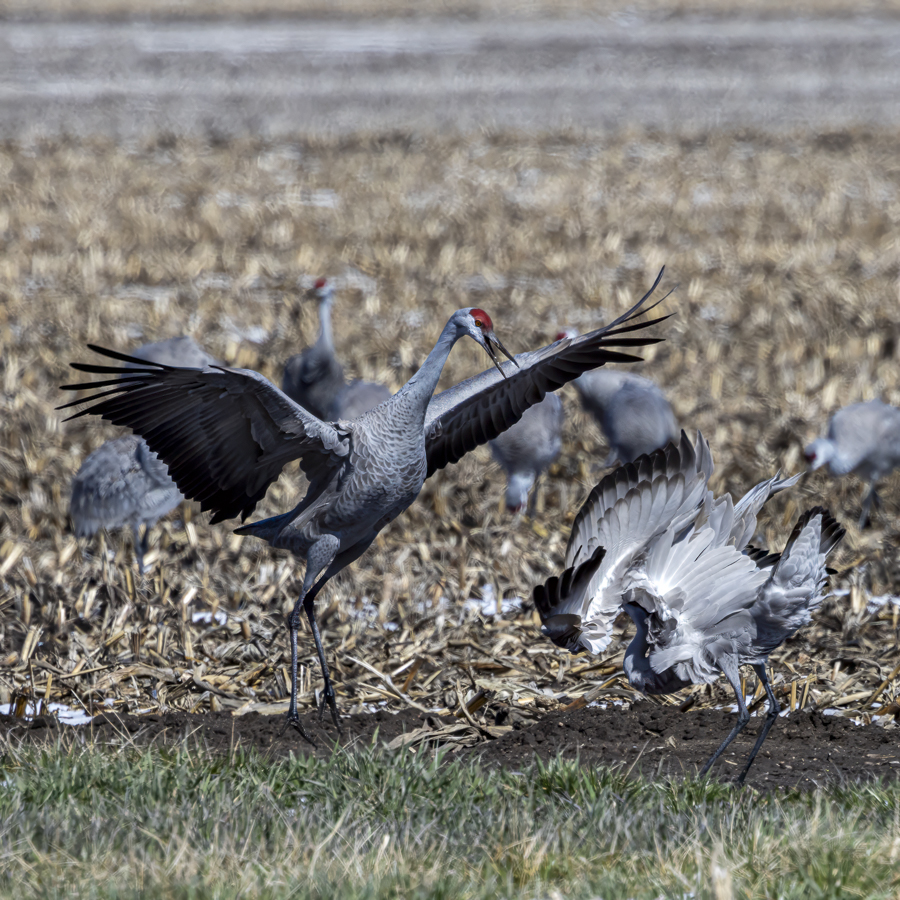
After leaving the Platte River, the cranes would disperse over the surrounding grain fields to continue the ritualistic fighting.
The spectacle lasted about three and a half hours, from when the group walked to the blind until the show was over. I told myself that with my equipment, there was no reason to start taking photographs before sunrise. That lasted about fifteen minutes. I could see the birds, so I had to shoot. At the end of the day, I walked away with 4,500 frames that I needed to edit and cull down to a handful to post and hopefully one to print.
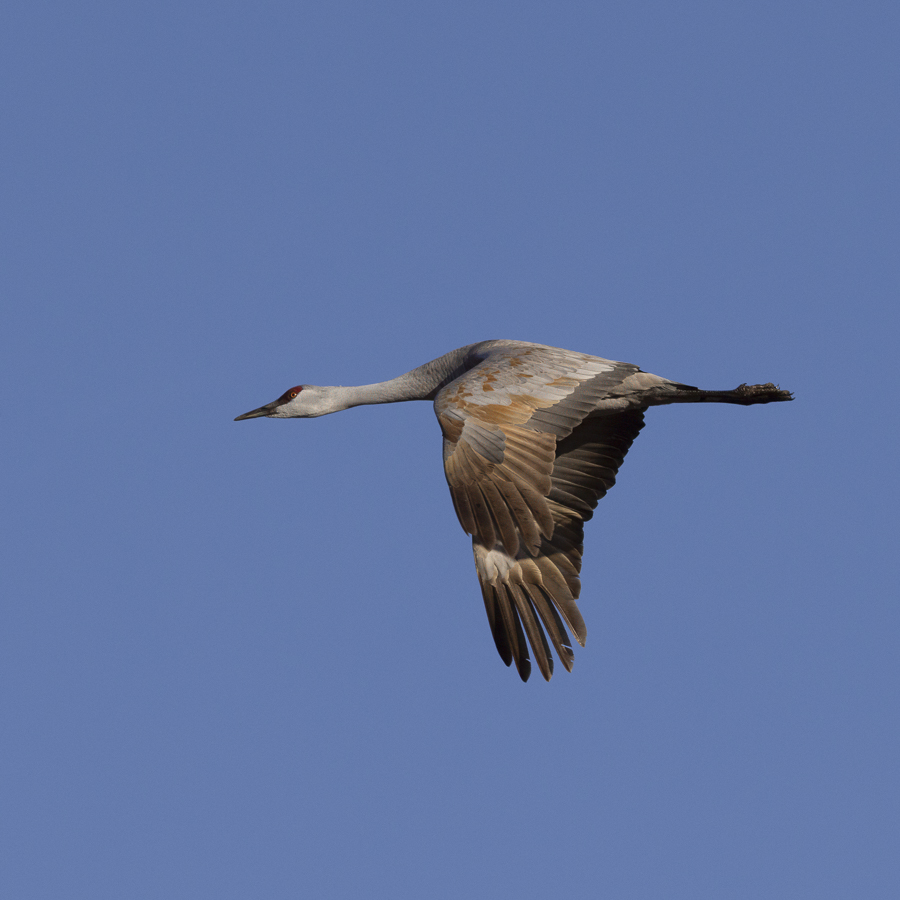
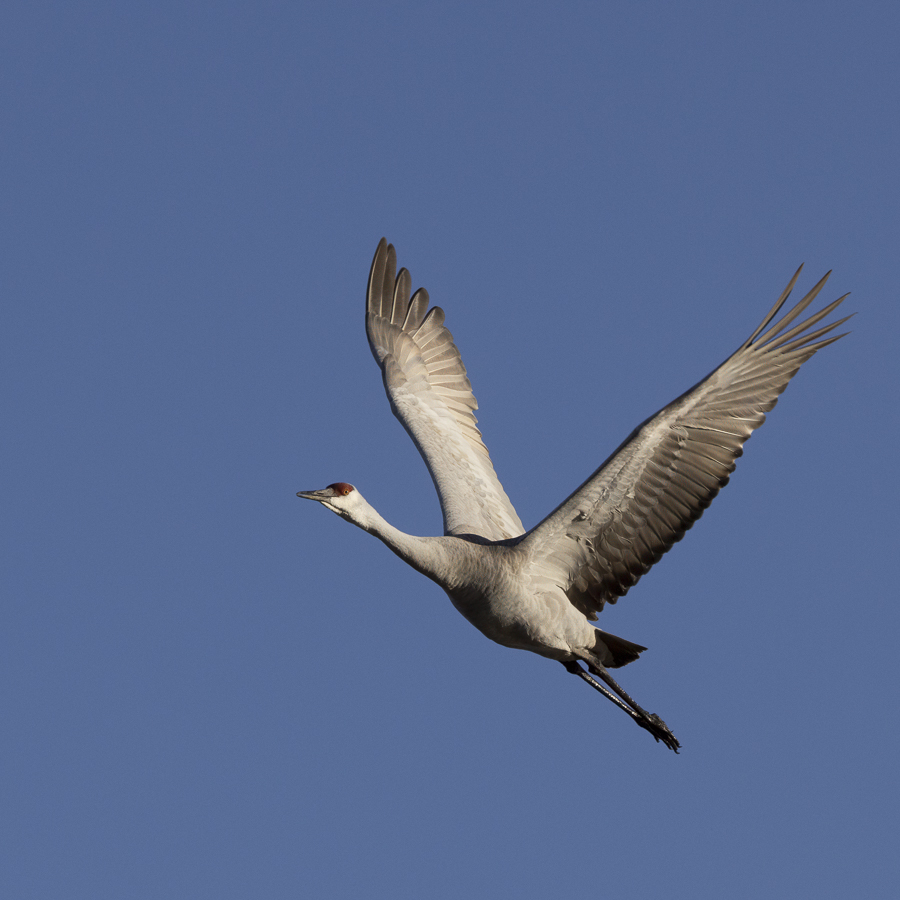
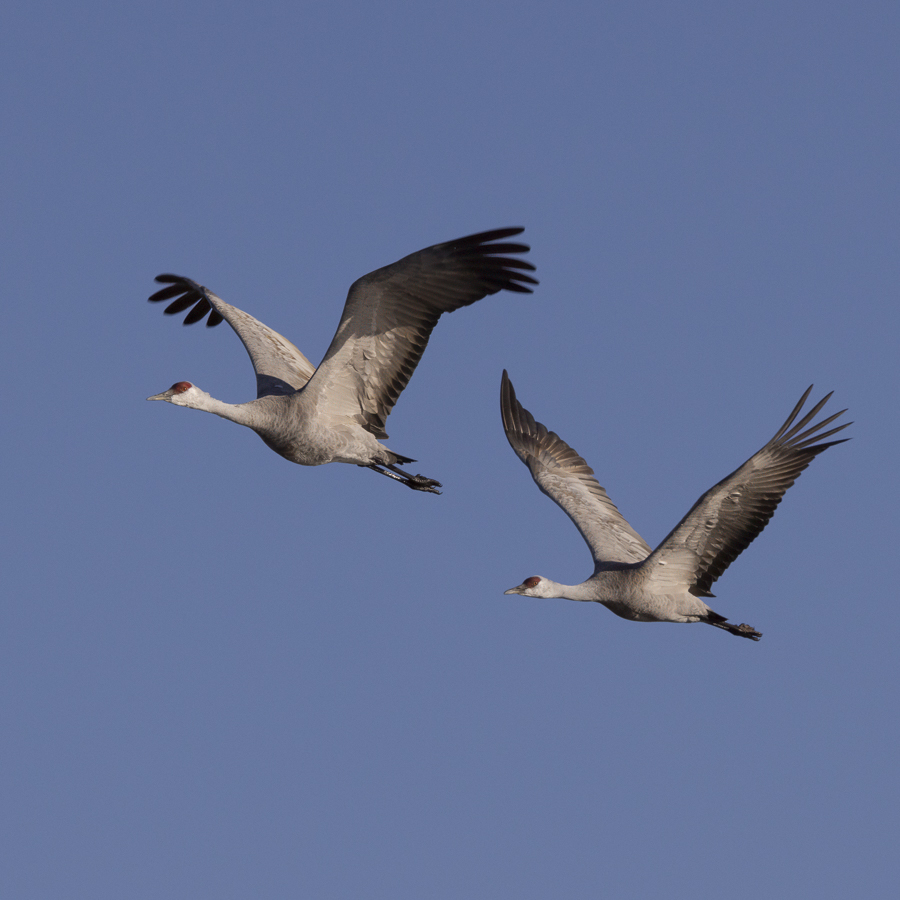
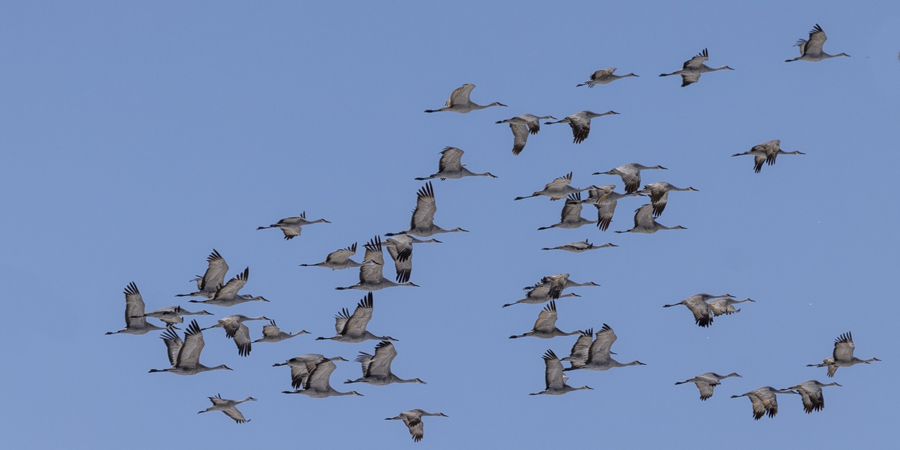
–
Fossil records have cranes in Nebraska for
9,000,000 years; the Platte River has been on the prairie for 10,000 years. The
Sandhill Cranes have been around for a while.
Dennis
- Hidden Falls Campground at Nebraska City is a great one-night stop off NE Rt 2. It has all concrete pads and clean individual showers. For us, this is a one-day run from home.
- Fort Kearny State Recreation Area has 110 sites around several small ponds. It is a short walk to the Platte River, where a walking bridge provides good opportunities to watch the Sandhill cranes.
- The best coffee shop in town is Kitt’s Kitchen and Coffee on “A” Avenue. We had breakfast there every morning we were in town.
- The Ina Rowe Sanctuary is owned by the Audubon Society and is dedicated to conserving the Platte River and maintaining the ecosystem for wildlife.
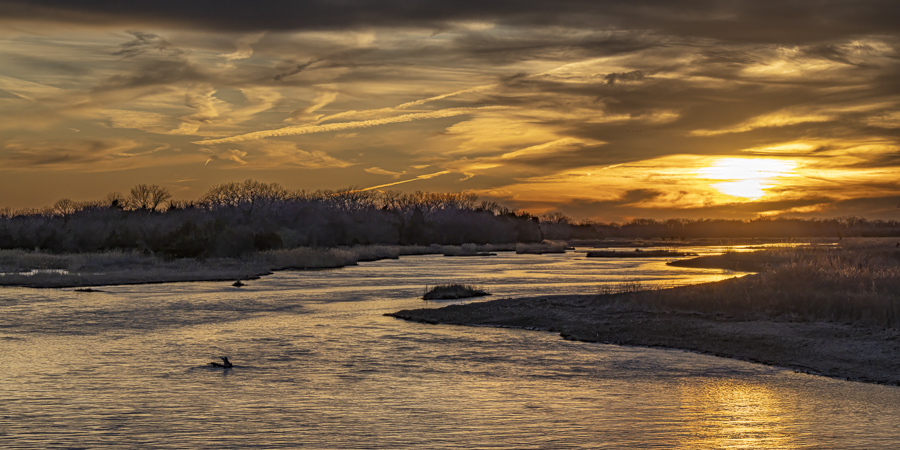
Platte, River sunset




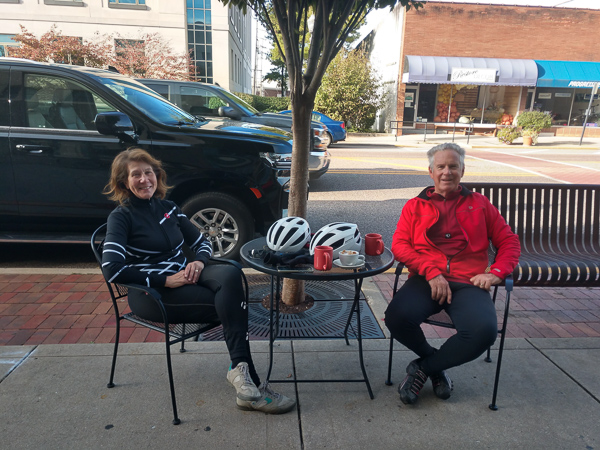
Great narrative. Beautiful closeup shots.
Thank you for the comments. The photos turned out a little better than I expected.